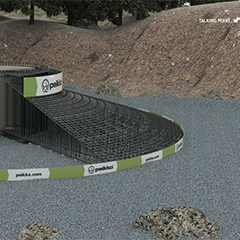The price per megawatt used to be the sole decision-making criteria in sustainable energy sources. Now the tide is beginning to turn – the whole energy value chain needs to be taken into account when assessing feasibility.
Power purchase agreements are on the rise. Most active are those energy intensive players who see sustainability and a low carbon footprint essential for their future business success. Many of them have an ambitious goal to use renewable energy sources only.
You might argue that this is something that is reserved only to the big boys such as Google, Facebook and likes. But be assured, the rest of the business will follow these trailblazers.
Call it good corporate citizenship, call it sound business sense. The fact remains the same; there is a growing demand for low carbon footprint energy solutions.
For example, Facebook has signed a 294 MW wind power purchasing agreement with Vattenfall. The power for their data centres in the Nordics will come from the Norwegian Bjerkreim wind farm.
‘Bjerkreim wind farm is built on our rock foundations, which will help Facebook to reach their renewable energy goals,’ says Kari Tuominen, the business director for Peikko wind turbine foundations.
Google is also a prime example.
‘The 148 MW output of the Lehtirova wind farm is used by Google. These megawatts are also produced on Peikko gravity foundations.’
A couple of years ago, Google made another power purchase agreement from the Tellenes wind farm in Norway.
‘The fifty 3.2 MW turbines built on Peikko’s rock foundations produce more than 500 GWh annually. The recent development is a clear proof that the investors will choose the low carbon alternatives. All other things being equal, the low emission option will always prevail,’ Tuominen predicts.
Another international giant, IKEA purchases renewable power which is generated on Peikko’s low emission foundations.
Total lifecycle emissions matter
The quest for lowering emissions has led to fierce competition between different technologies. Be it solar, wave or wind, every energy source will need to be more transparent in their overall emissions.
So how green is wind energy after all? You could say, it depends.
But to give a more educated answer, you need to take the entire value chain into closer scrutiny by conducting life cycle assessments for all the system components. This will bring to focus the emissions generated during the hardware manufacture, transportation and assembly – in addition to the emissions generated during the day to day energy production.
Peikko is the first player in the market who has made a life cycle assessment for its wind turbine foundations.






























